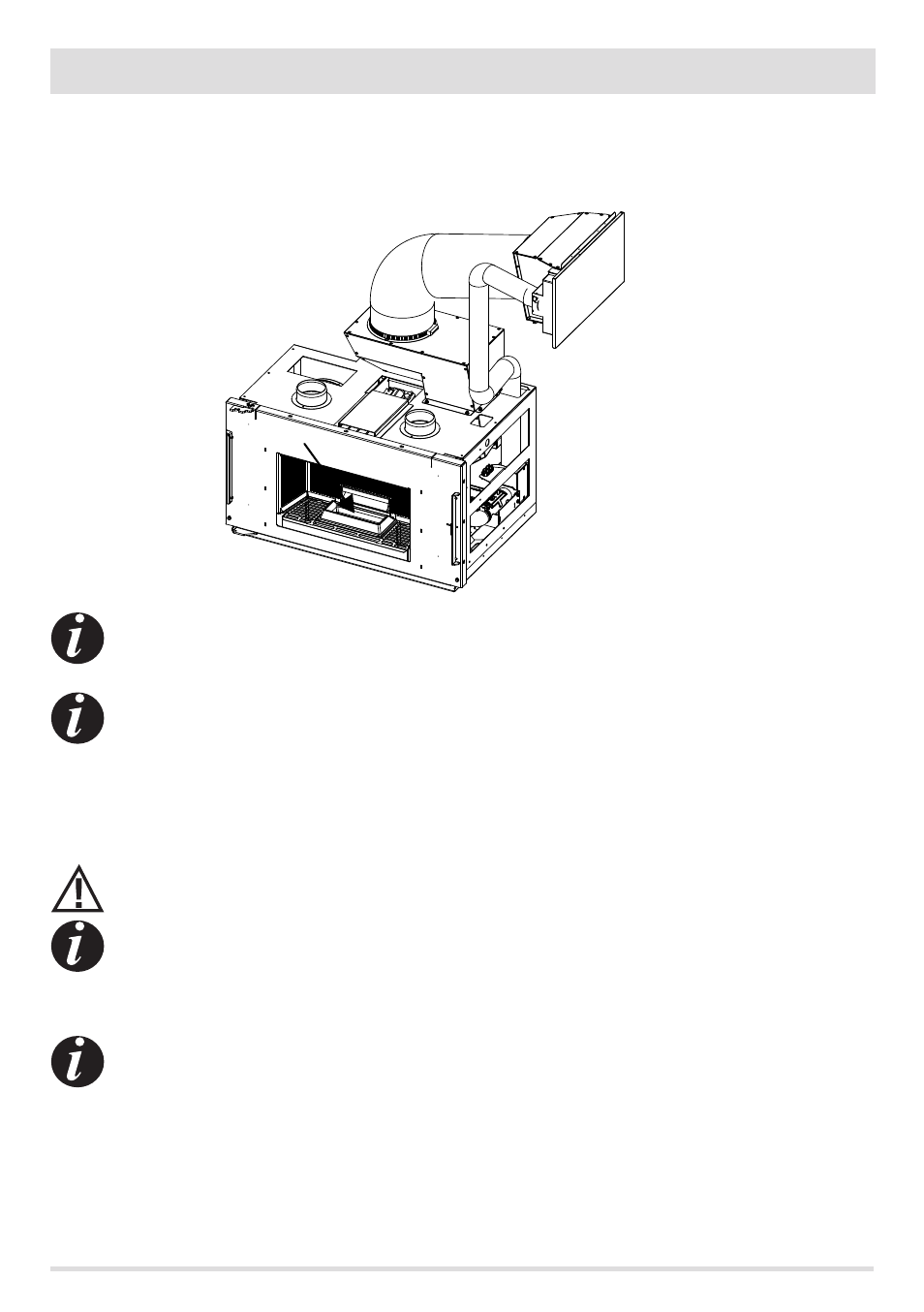Precautions before start-up – MCZ Vivo 90 Pellet Comfort Air User Manual
Page 36

34
8-PRECAUTIONS BEFORE START-UP
GENERAL PRECAUTIONS
Remove any objects that may burn from the brazier (manual, various adhesive labels or any polystyrene).
Check that the brazier is positioned correctly and rests properly on the base.
The first start-up may not be successful as the feed screw is empty and does not always manage to load the required
amount of pellets in time to light the flame.
CANCEL THE FAILED IGNITION ALARM BY PRESSING AND HOLDING THE ON/OFF KEY FOR A FEW SECONDS. REMOVE THE
PELLET LEFT IN THE BRAZIER AND REPEAT THE START-UP. (SEE “SAFETY DEVICES/ALARMS” PARAGRAPH)
If after repeated attempts, the flame fails to ignite, despite a regular flow of pellets in the brazier, which must rest snugly
against the slots and be clean without any ash incrustations. If no anomaly is found during this inspection, there may
be a problem with the product components or installation may not be correct.
REMOVE THE PELLETS FROM THE BRAZIER AND CONTACT AN AUTHORISED TECHNICIAN.
Do not touch the boiler during the first lighting, as it is during this phase that the paint sets. If you touch the paint,
you may expose the steel surface.
If necessary, touch up the paint with the spray can of the specific colour. (See “Pellet stove accessories”)
It is good practice to ensure effective ventilation in the room during the initial start-up, as the boiler will emit some
smoke and smell of paint.
Do not stand close to the stove and, as mentioned, air the room. The smoke and smell of paint will disappear after about an
hour of operation, however, they are not harmful in any case.
The boiler will be subject to expansion and contraction during the lighting and cooling down stages, and may therefore make
slight creaking noises.
This is absolutely normal as the structure is made of laminated steel and must not be considered a defect.
It is extremely important to make sure the boiler does not reach high temperatures straight away, but to increase the temperature
gradually using low power at first.
This will prevent damaging the ceramic or serpentine stone tiles, the welds and the steel structure.
